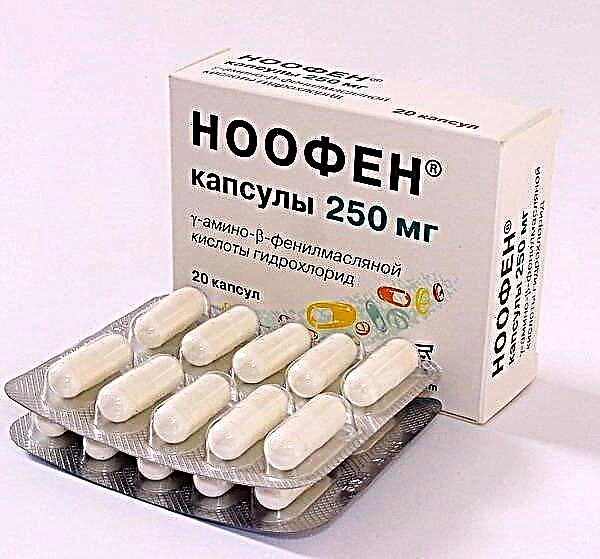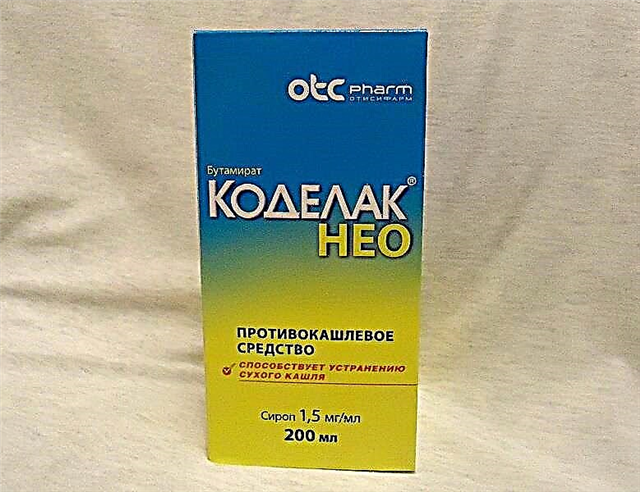In some cases, genital diseases are found in boys immediately after birth. One of them is dropsy of the testicles in a child. Such a deviation causes panic in parents, and this is not surprising - outwardly, the pathology looks rather frightening. How dangerous is dropsy of the testicles? Newborns need surgical treatment or is it enough medication? What are the causes of the disease, and how is it expressed? This article will answer these and other important questions.

Hydrocele in infants is quite common
About dropsy of the testicles in newborns
Hydrocele in translation from Greek means water (hydor) + tumor, hernia (kele). Otherwise, the disease is called dropsy of the testicular membranes. It is an accumulation of fluid between the parietal and visceral plates of the testicular sheath. The disease received this name in the 16th century.
Pathology usually occurs in boys 1 year of age and in adults aged 20-40 years. At birth, it is observed in 10-15% of babies, but passes without treatment in the first months of life.
On a note. Most often, the hydrocele is unilateral. In this case, bilateral damage also takes place, especially when it comes to babies.
The main symptom of the disease is an enlargement of the scrotum. Mild and moderate severity are not dangerous for the child's life. However, if medical attention is not provided in time, the scrotum will continue to grow due to the accumulation of fluid in it, the amount of which can reach several liters.
Hydrocele is dangerous in its consequences - pathology can cause the formation of pus, hematomas, testicular rupture, the development of male infertility.
There are several types of pathology:
- By the mechanism of occurrence:
- Congenital. Due to anatomical predisposition;
- Acquired. Usually acts as a complication of various diseases (syphilis, gonorrhea, tuberculosis, etc.).
- Congenital dropsy of the testicle, in turn, is divided into the following types:
- Communicating hydrocele (fluid reaches the testicle from the abdomen)
- Isolated (the source of the fluid is the scrotum, it does not come into contact with the abdominal cavity).
- By the nature of the course of the disease:
- Sharp;
- Chronic.
- Depending on the location, there are:
- Bilateral dropsy in boys;
- Unilateral defeat of one of the testicles.
On a note. According to the doctor, the congenital form of hydrocele is more common in newborn babies.

Communicating and non-communicating dropsy of the testicle
Causes of the disease
Various reasons can lead to the development of a hydrocele in a child:
- Infectious diseases suffered by a woman during pregnancy.
- The birth of a child ahead of schedule.
- Injury and other mechanical stress during childbirth.
- Heredity.
- Anatomical defects.
- Traumatic injuries after birth. Usually occur due to improper handling of the baby. For example, a child falling to the floor can injure the external genitalia.
- Pathology of the genitourinary system. This category should include congenital testicular torsion, non-closure of the duct between the abdominal cavity and the scrotum, abnormalities in the structure of the external genital organs. It is also worth noting the prolonged course of urological diseases, as a result of which the process of formation and outflow of fluid between the membranes is disrupted.
- Benign and malignant tumors. Neoplasms lead to a defect in the development and functioning of the organs of the genitourinary system. A similar condition can be caused by oncological processes in the lymph nodes and intestines. In these cases, dropsy is most often bilateral in nature.
- Hormonal disruptions during childbearing or in a newborn.
- The threat of termination of pregnancy.
- Intrauterine fetal hypoxia.
Mom's diseases during pregnancy
Pathogenic microorganisms easily cross the placental barrier. Penetrating through the feeding vessels of the placenta into the child's body, they provoke severe inflammation. As a result of an infectious lesion, various anomalies arise in the structure of organs, including the external genitalia.

During pregnancy, a woman should try to avoid sources of infectious diseases.
Heredity
As statistics show, in families where congenital forms of hydrocele are recorded, more babies are born with this pathology.
Interesting. To date, the exact genes have not been identified in which the code of the hereditary relationship is laid. At the same time, the currently existing scientific theories confirm this assumption.
Hormonal disturbance
Disruptions in the endocrine system can occur both in the mother's body during the period of gestation, and in the body of the baby itself.
In addition, in premature babies, there are numerous deviations in the structure and functioning of the male glands. The completion of their formation occurs in the third trimester of pregnancy. At this point, the testicles should descend from the abdomen to the groin. The premature birth of a baby leads to the fact that the process of ontogenesis of the gonads does not have time to complete, and the baby is born with defects in the structure of the external genital organs.
Abdominal pressure
There are diseases that can lead to increased pressure on the intra-abdominal cavity. As a result, there is an excess accumulation of fluid inside the testicles. Most often, such violations occur during intrauterine development. Various defects of the abdominal wall also lead to the development of dropsy.
Birth injury
Similar phenomena are observed during natural childbirth. The risk of birth injury is increased if a woman has a narrow pelvis and is pregnant with a large fetus. Other contributing factors are:
- Breech presentation of the fetus;
- An overly active labor process.

Breech presentation
Disease development
Before the baby is born, the testicles are in the baby's abdomen. When a few weeks remain before delivery, they descend into the groin area. At this moment, they pull their shells with them.
On a note. In babies born before 36 weeks of age, prolapse of the testicles occurs after birth.
The innermost layer of the testicle consists of the parietal and visceral parts. In medicine, it is called the "processus vaginalis". After lowering, the inner shell overgrows, resulting in the formation of a closed cavity. The organ stops producing fluid. The development of a communicating hydrocele is explained by the presence of an opening between the scrotum and the peritoneum, which appeared as a result of non-closure of the processus vaginalis. As a result, fluid enters the testicle.
Non-communicating dropsy is much less common. This condition is characterized by improper contamination of the membrane, as a result of which it retains the ability to produce fluid.
An important role in the development of pathology is played by the imperfection of the lymphatic system in the groin area. Babies do not have a fully formed filtration of fluid in the blood vessels of the perineum. As the lymphatic system matures in the child, fluid from the membranes of the genital organ is absorbed.
When develops
Congenital pathology develops during intrauterine development, namely in the third trimester. If we are talking about an acquired defect, then often it appears in the first year of a baby's life.
Acute and chronic forms
The acute form is characterized by the rapid development of symptoms (from several hours to several days). Chronic dropsy develops slowly.
Symptoms
For dropsy of the testicles in infants, the following symptoms are characteristic:
- Increase in the size of the scrotum several times. If the pathology is unilateral, there is a pronounced asymmetry. At home, this symptom is not difficult to detect;
- Redness of the skin. Under normal conditions, the skin in the groin is dark brown. Dropsy causes the dermis to stretch too much, causing it to turn red. The skin is somewhat hot to the touch;
- Painful sensations. Observed during physical activity, as well as after taking a hot bath, sometimes after urinating;
- Excessive mobility of the skin of the scrotum. Since a lot of fluid has accumulated inside the testicle, the membranes of the organ begin to easily slide relative to each other. For a severe form, pain is characteristic;
- Changing the shape of the organ. In the presence of a defect, the scrotum takes the form of an "hourglass". This symptom is usually detected by the urologist during the clinical examination of the child.
- Violation of the general condition of the baby. The baby is more often capricious, worried, crying. The mild form of the disease quite often does not lead to a change in the child's behavior, while the severe form is accompanied by an increase in temperature, disturbed sleep and appetite. In this case, the baby can give up his usual activities, games;
- Constant movement of fluid (if the dropsy is communicating). After sleep, the scrotum has its usual size, by the evening the concentration of fluid reaches its maximum. In addition, external factors also affect the enlargement of the scrotum: severe crying, constipation;
- With an isolated hydrocele, the size increases gradually. The amount of fluid does not change during the day;
- A large scrotum can lead to difficulty urinating because it compresses the urethra;
- Palpation of the testicle does not hurt the baby;
- If dropsy is complicated by an infection, then the child has a fever, nausea, vomiting, diarrhea.
Treatment and prevention
Therapy must be scheduled on time. The sooner the defect is identified and treatment is started, the more likely it is to recover completely. Usually, effective therapy will cure the child by 3 years of age. The appropriate treatment methods are selected by a pediatric urologist.
To formulate a tactic, the doctor must take into account a number of factors:
- The age of the child;
- The presence of other diseases;
- The state of the immune defense;
- Physiological features.
In complicated cases, you often have to seek help from a pediatric surgeon.

Surgery to remove fluid in the scrotum
Events
In most cases, the disease goes away on its own by 1.5 years. For this reason, with a slight increase in the size of the scrotum, surgical intervention can be dispensed with.
To date, to eliminate dropsy of the testicles in infants, the following measures are used:
- Wait-and-see tactics. The operation is not prescribed until the child reaches one and a half years. During this time, the formation of male genital organs in babies manages to complete, the duct between the abdominal cavity and the scrotum is also closed.
- Operative intervention. Produced when the child reaches 2 years of age. The operation is aimed at removing fluid from the scrotum. In some cases, the operation can be prescribed at an earlier stage (if dropsy progresses rapidly, accompanied by an inguinal hernia, an infectious process).
Important! Medical supervision of a small patient should be systematic. At home, it is strictly forbidden to treat dropsy. Otherwise, the acute form of the disease can become chronic. There is also a risk of scrotal infection and hernia formation.
As for prevention, the baby should be provided with ideal hygiene of the genitals: washing should be carried out at least 1 time per day. Doctors also advise to give up diapers and use diapers instead. After any therapy, the child needs a home regimen for 10 days. At this time, active physical activity is excluded. The baby should be regularly shown to a specialist to assess his health.
Drugs
If hydrocele symptoms occur, your doctor may prescribe medications to reduce swelling, pain, and inflammation in the problem area. In this case, the constant intake of such funds for dropsy is not required. In the case of an infectious infection against the background of a hydrocele, a course of antibiotics is prescribed.
On a note. To date, there are no conservative treatments for dropsy of the testicles.
A dropsy in a child is an accumulation of fluid between the layers of the testicle. The main symptom is an increase in the size of the scrotum in the absence of pain syndrome (in most cases). The main method of therapy is surgical. At the initial stages of the development of pathology, medical supervision is carried out without any intervention.



